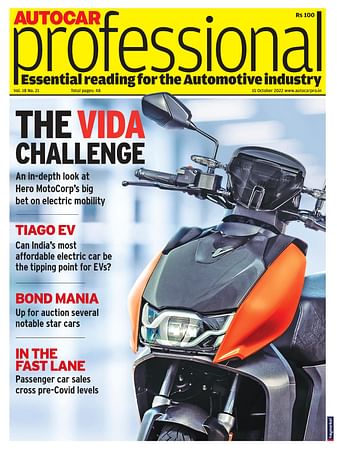GKN Driveline’s new CV joint to go in new BMW 5 series
GKN Driveline’s new lightweight VL3 constant velocity joint system claimed to make the driveline more efficient.
GKN Driveline’s new lightweight VL3 constant velocity joint (CV joint) system has launched in its second application on the all-new BMW 5 Series sedan. The VL3 joint, the company says, makes the driveline more efficient, with measurably reduced CO2 emissions.
GKN has held patents on the VL series of CV joints for more than 50 years, and the last significant update to the design was in 2001, when the VLi joint appeared in the BMW 7 Series. The joint was launched last year on the new model of BMW’s luxury saloon. Working to a schedule of just 18 months, GKN Driveline delivered the new benchmark in lightweight, high-performance sideshaft systems to the BMW Group in the VL3 system.
The VL3 design is a brand new S-shape track in the housing, which changes the way the ball bearings move. The balls are given a wider range of movement, helping to balance the forces in the joint by distributing the torque evenly between the bearings. In turn, this bolsters the strength of the cage and improves refinement in the joint movement.
Design flexibility for automakers
Efficiency is improved using eight-ball bearings instead of six. Using more bearings results in a lower load per ball, in turn enabling each ball to be smaller in diameter, thus reducing the diameter of the packaging with no detriment to the torque capacity of the joint. Alternatively, by keeping the VL3’s eight balls of the same size as the six in the VLi system, higher loads can be transmitted through the joint. The design is flexible, which means that automakers have the choice of reducing packaging size, increasing torque capacity, or a mix of both.
The third key design innovation of the new VL3 joint is the diaphragm-shaped boot, which delivers an improved sealing system. The diaphragm design replaces the conventional cap-and-boot solution typical for VL series joints, and instead uses a shallow, one-piece contoured cover. Shrinking the size of the cover significantly reduces the volume of grease needed to pack the joint. This reduces the weight and cost of the joint, as well as the space needed to package it – giving more freedom to the design of the surrounding suspension components.
RELATED ARTICLES
Sept 2024 From R&D incentives to EV infrastructure: What auto components industry expects from Budget 2024
Sept 2024 From R&D incentives to EV infrastructure: What auto components industry expects from Budget 2024
US car majors hit the brakes on driverless cars
Ford Motor and Volkswagen to close self-driving startup Argo AI, due to lack of technology and clear regulations.
Autoliv and Geely to develop advanced safety tech for future vehicles
Scope of cooperation includes safety for high-level autonomous driving, intelligent steering wheel technology, a 360deg ...






 23 Jun 2017
23 Jun 2017
 8243 Views
8243 Views








 Autocar Pro News Desk
Autocar Pro News Desk




